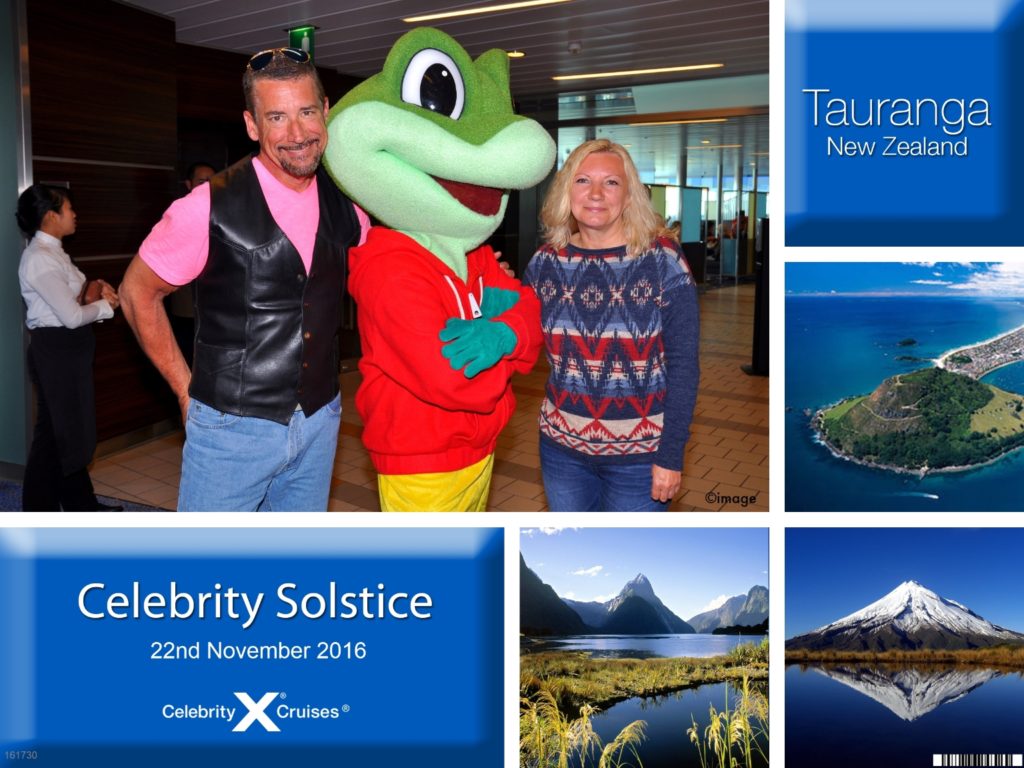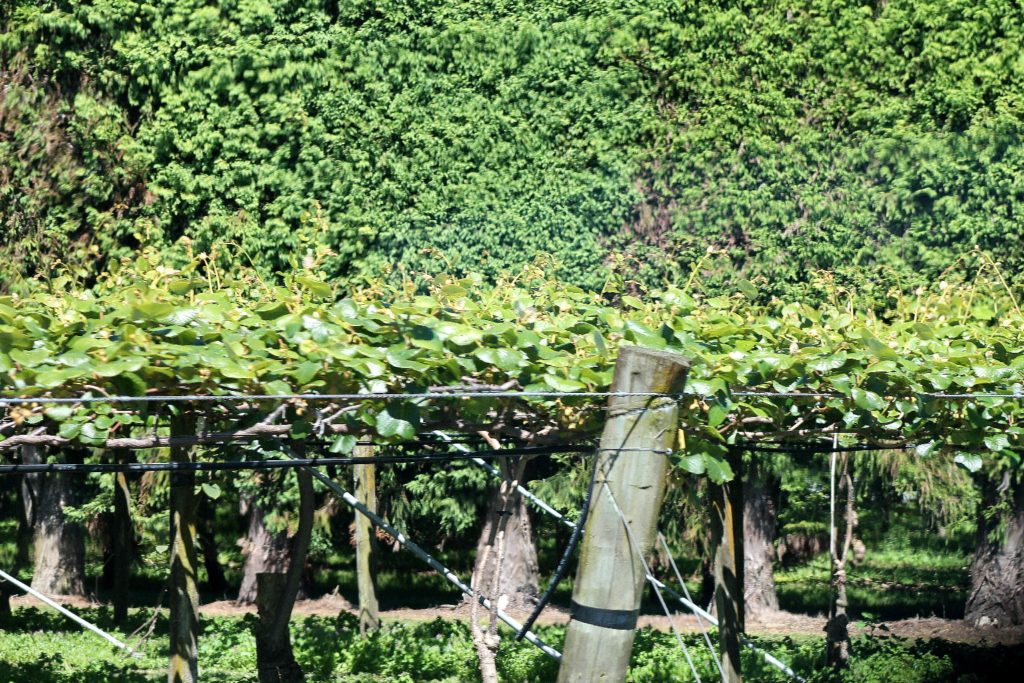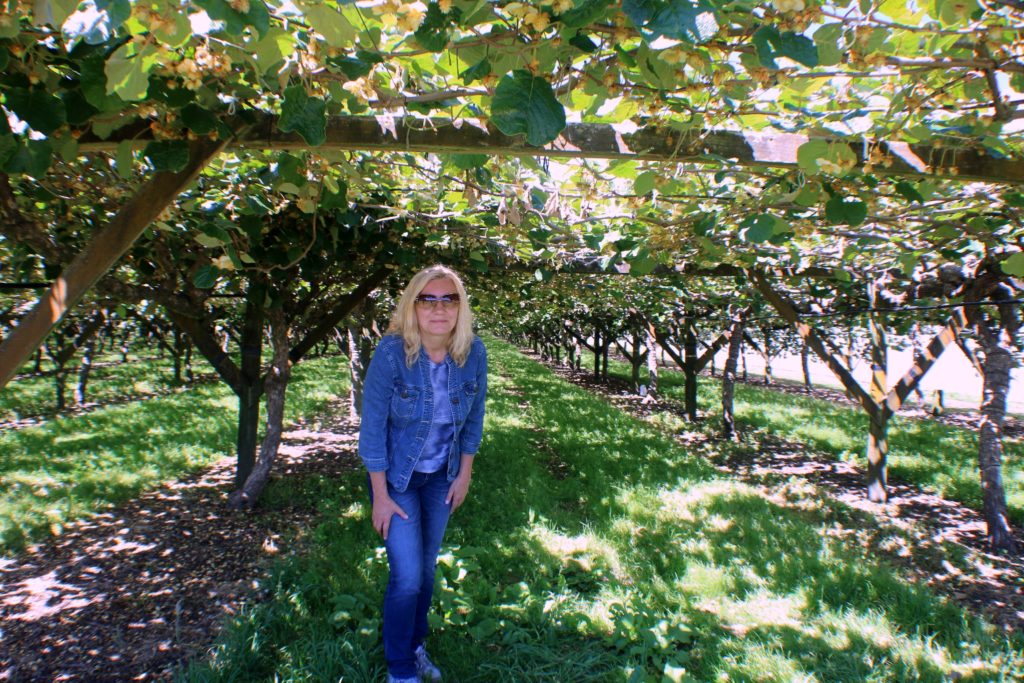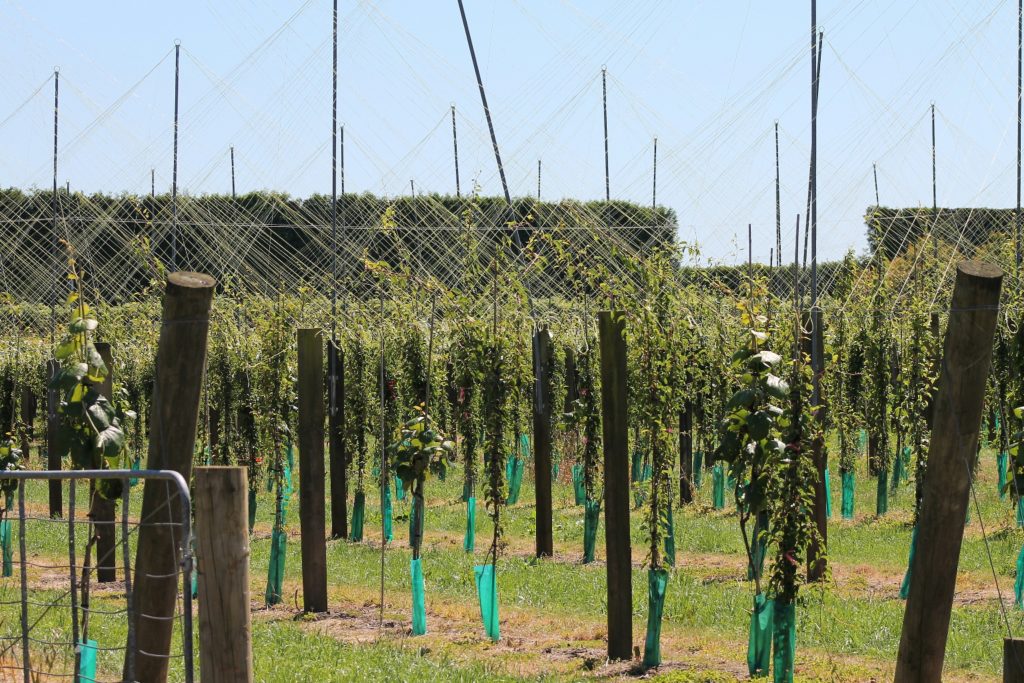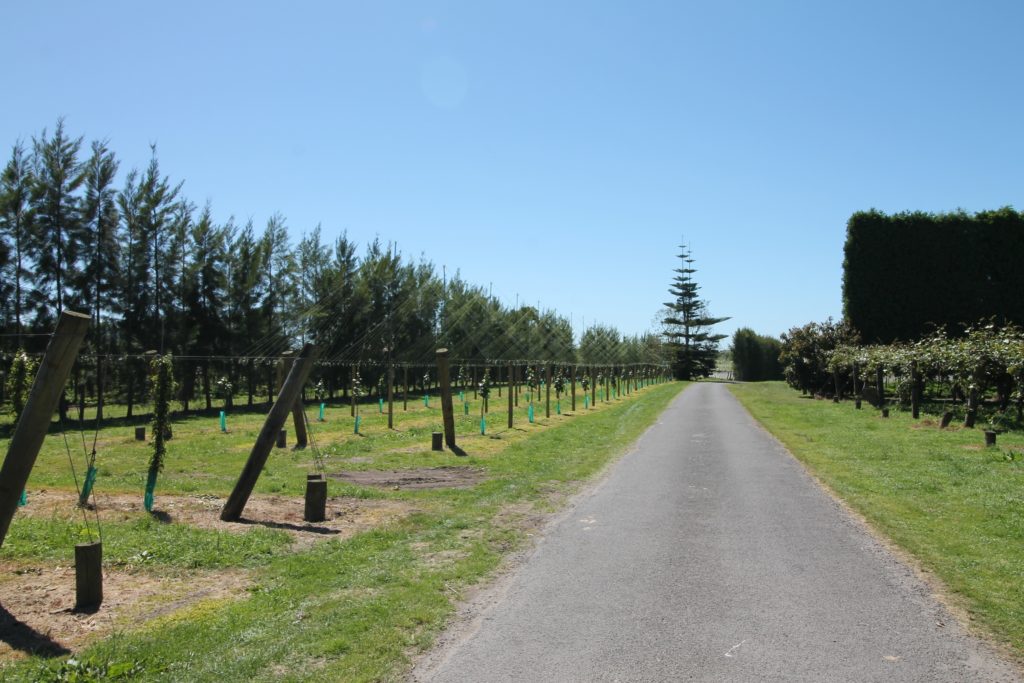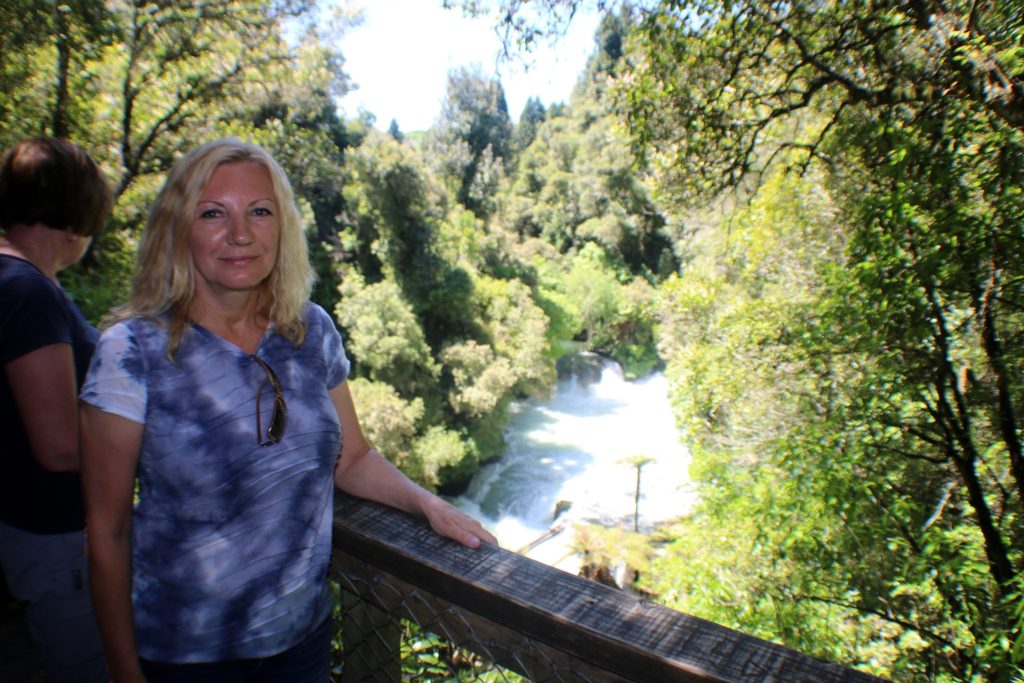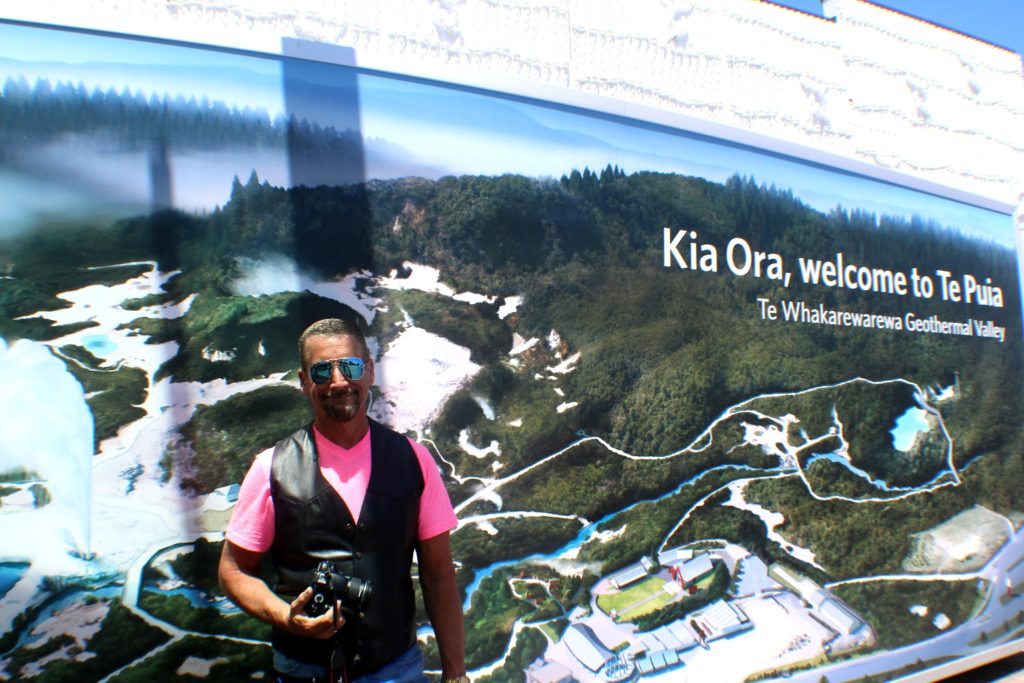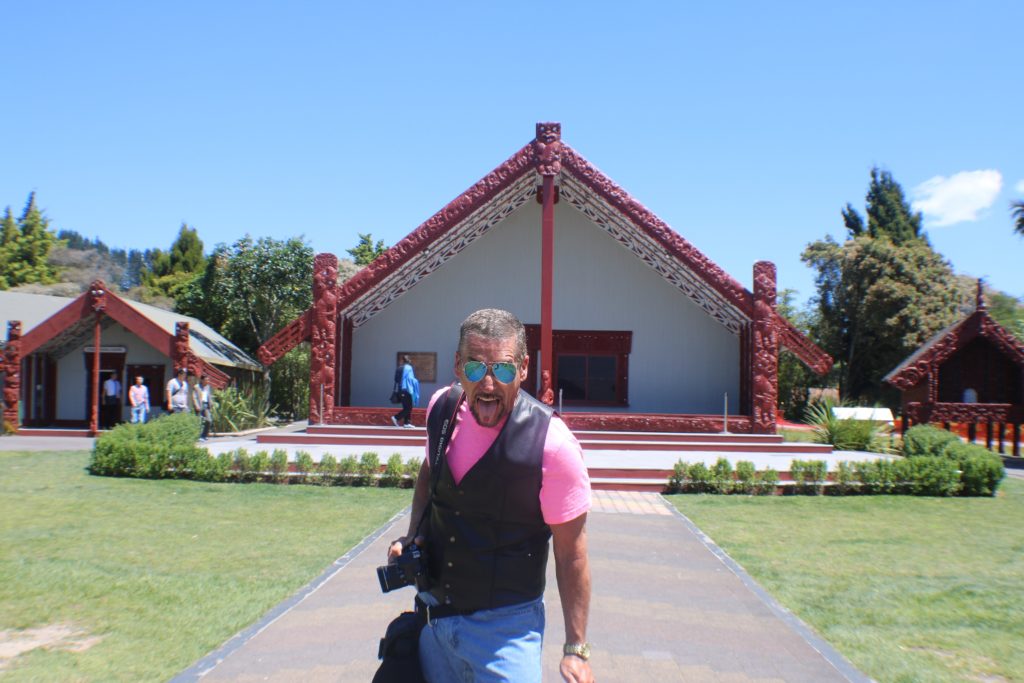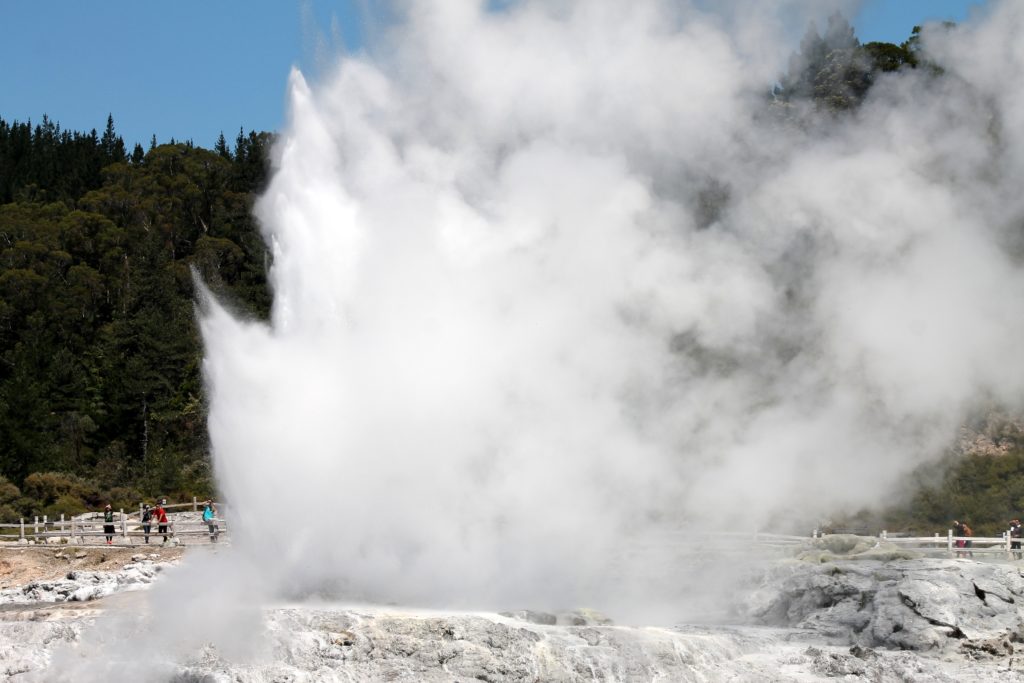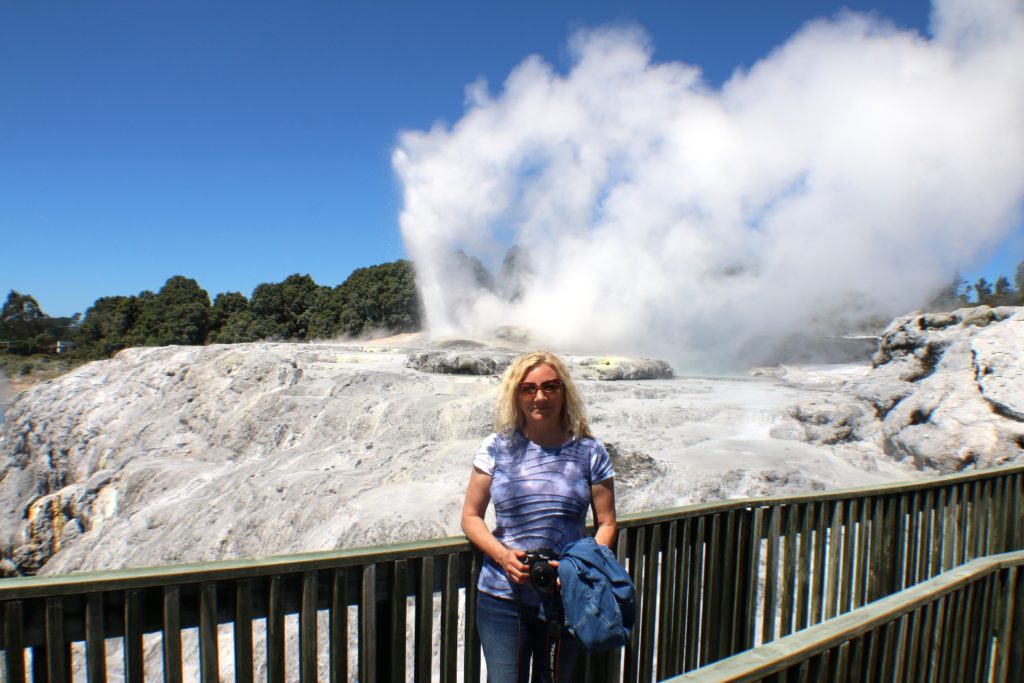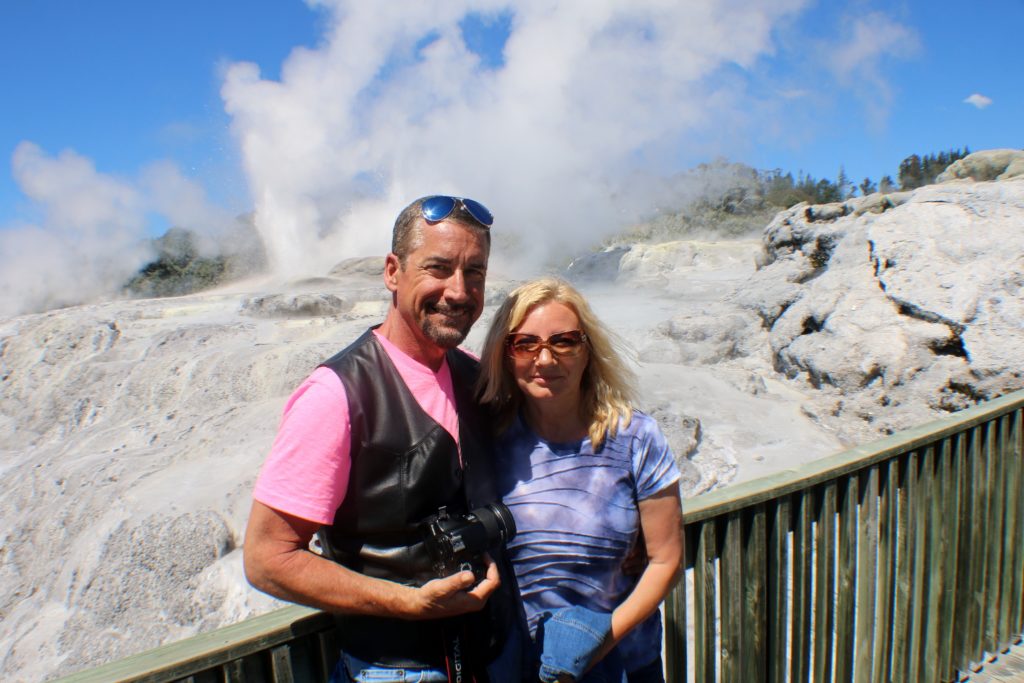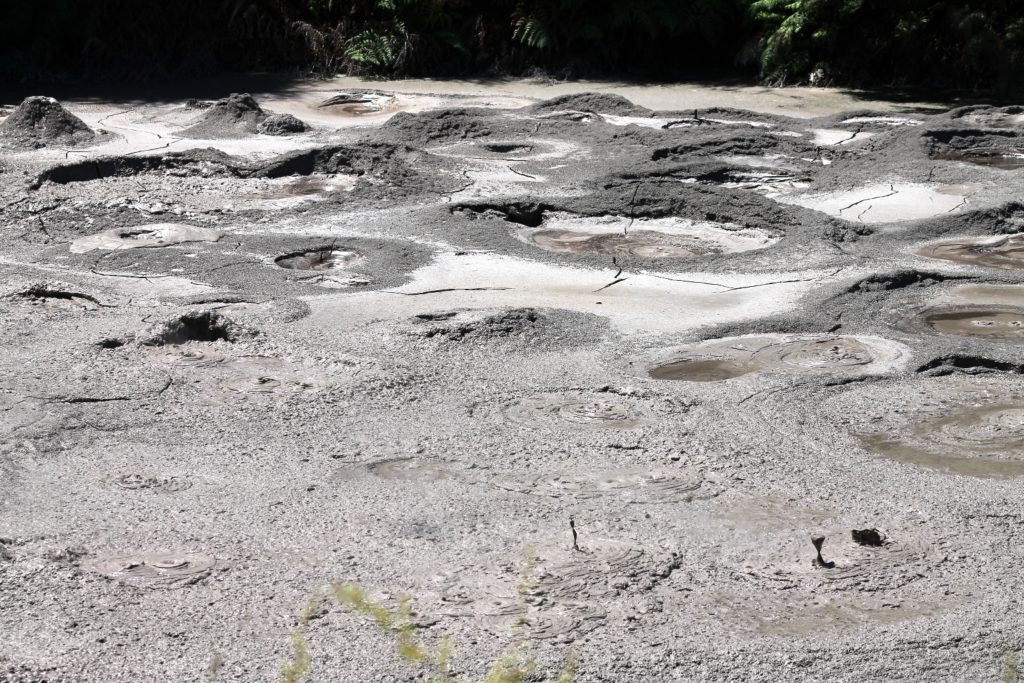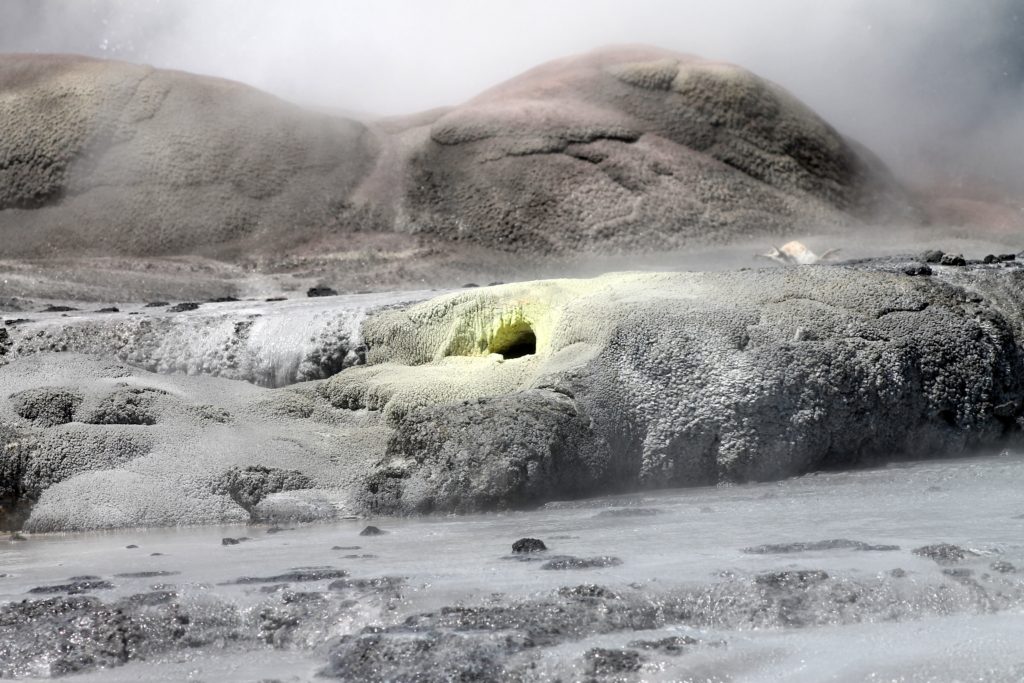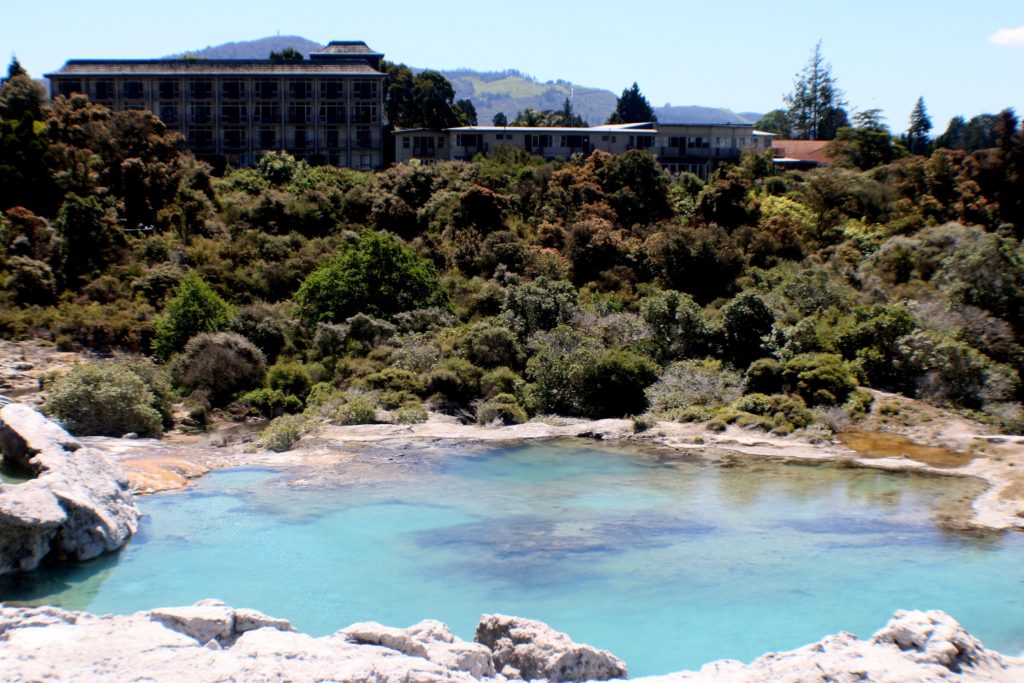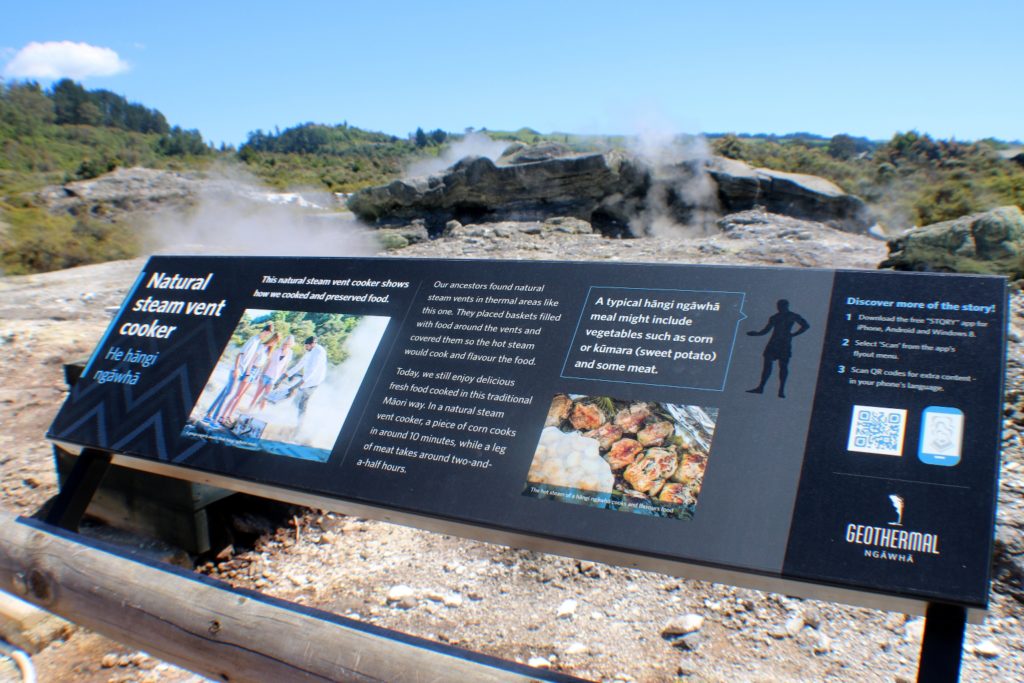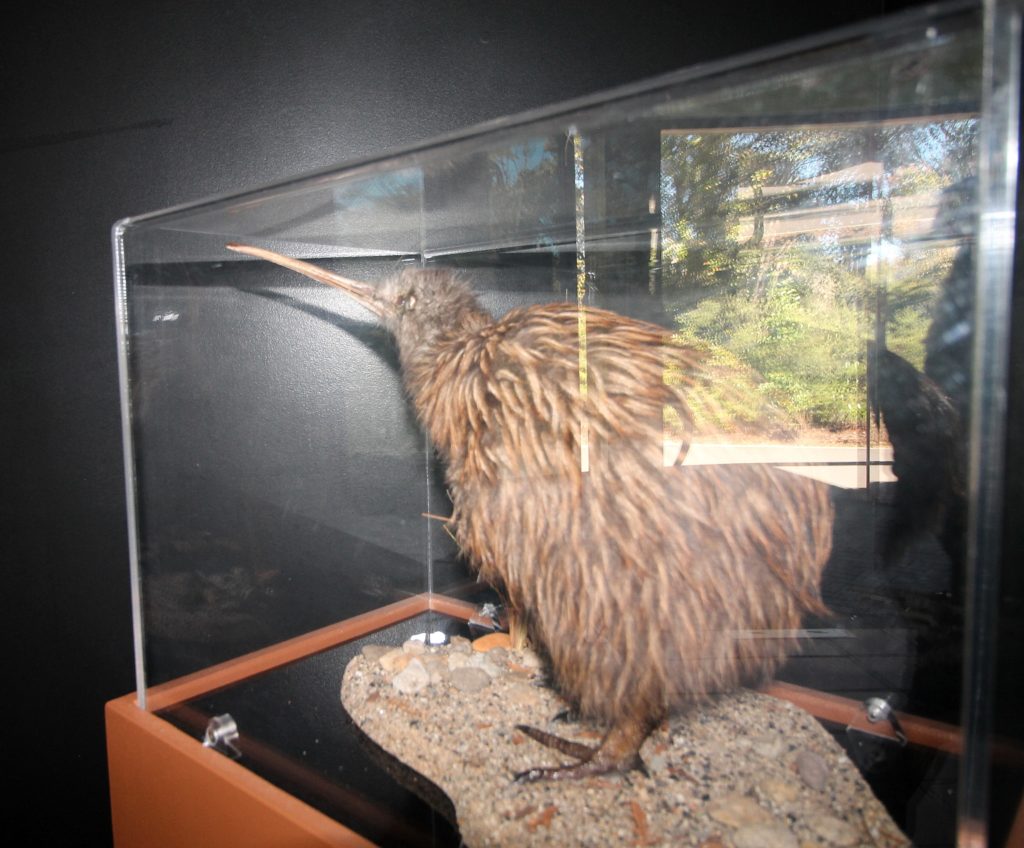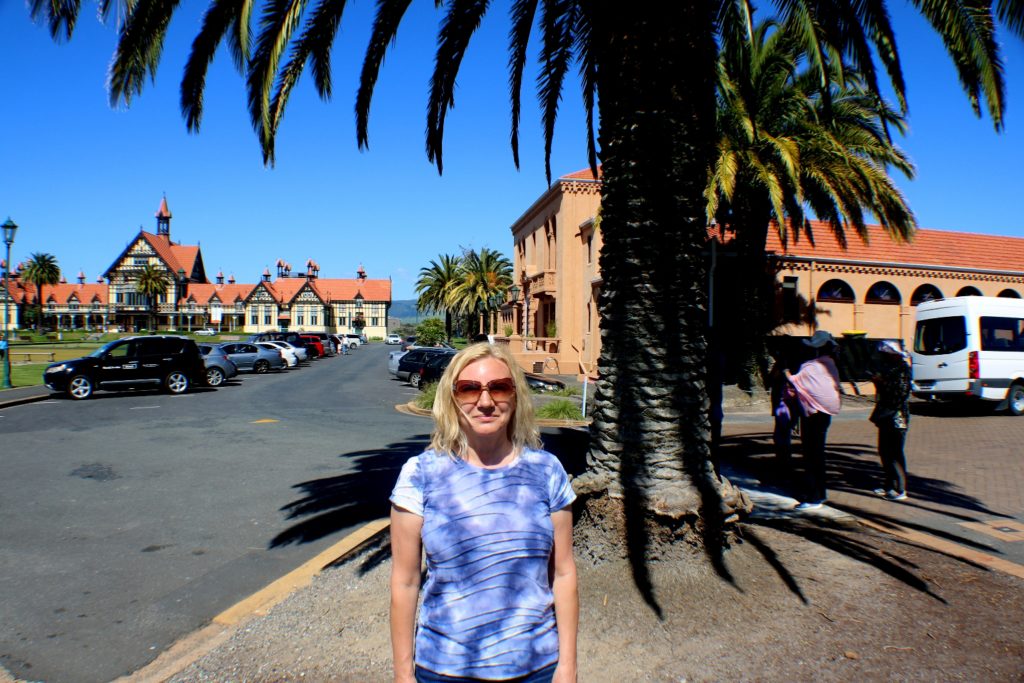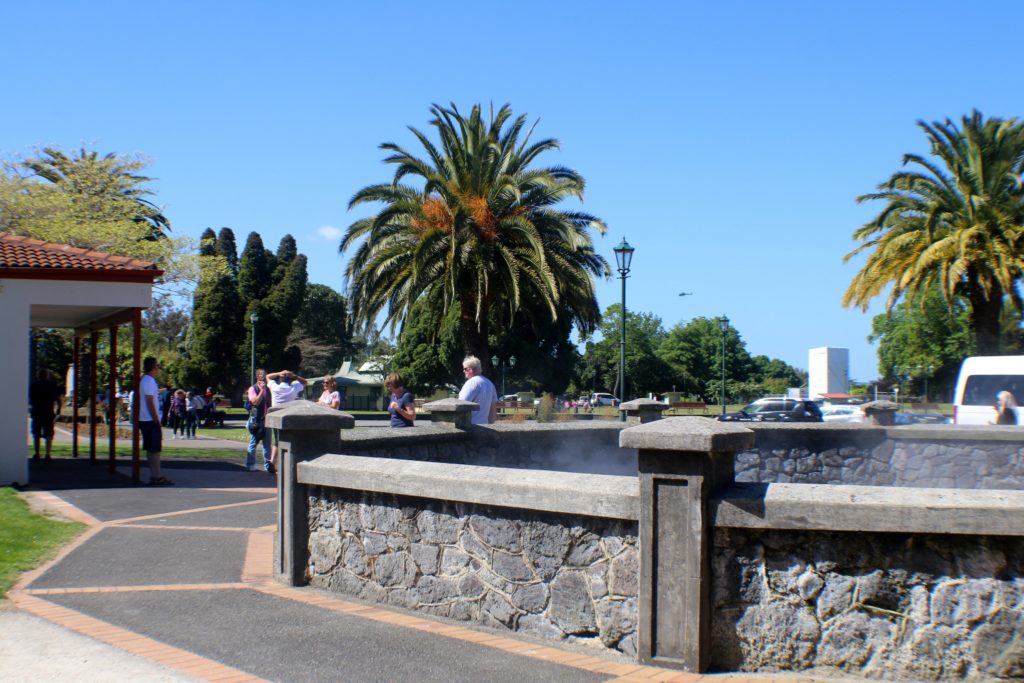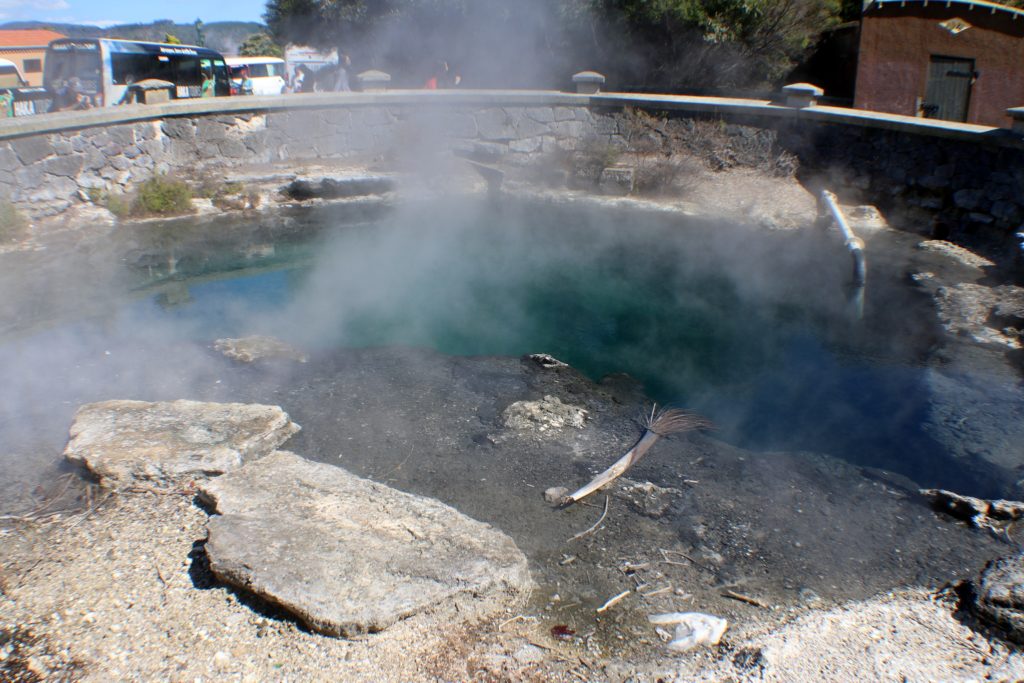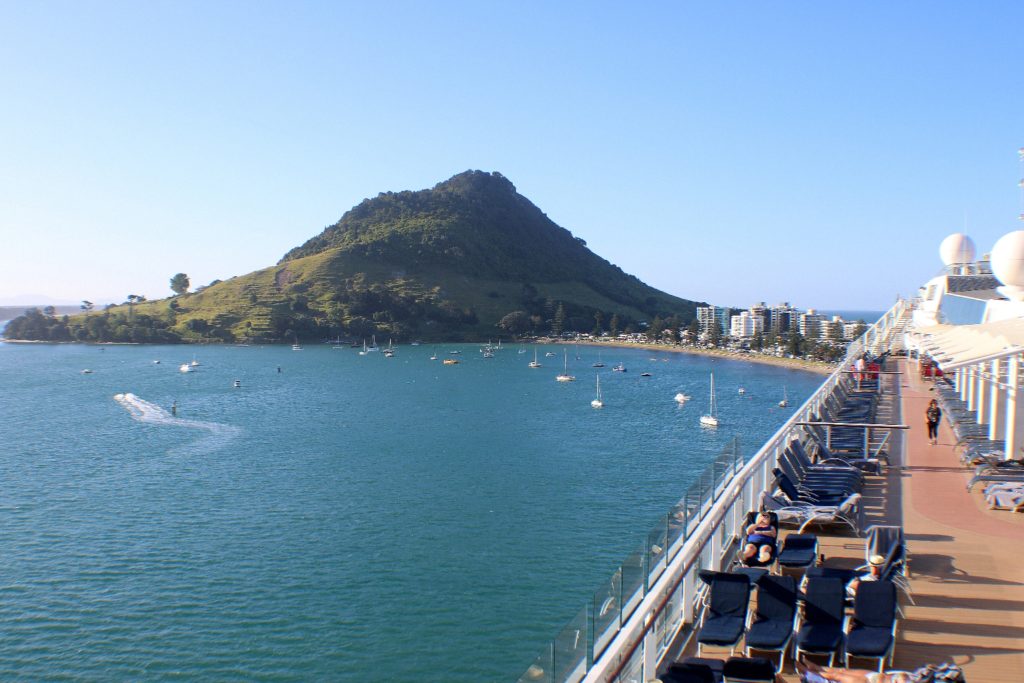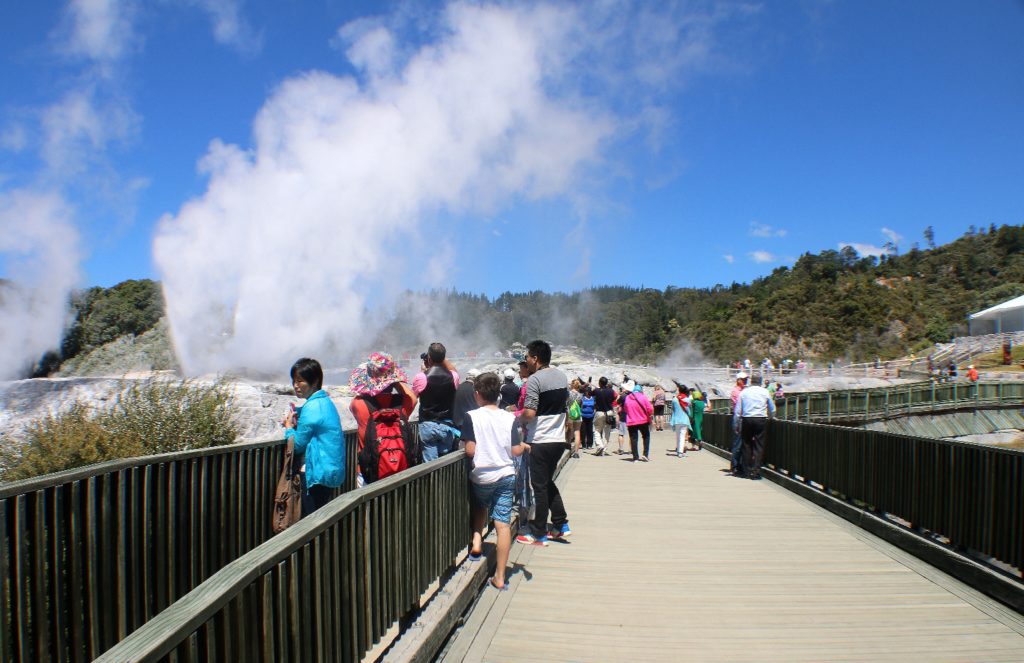
For our second day in Tauranga we purchased a 7 hours excursion to Rotorua, a town set on its namesake lake on New Zealand’s North Island, is renowned for its geothermal activity and Maori culture. The tour included Rotorua geysers, mud pools, Maori village, and plenty of scenic sights.
The most popular site was Te Puia – Rotoruas premiere cultural and geothermal destination and home to world-famous Pohutu Geyser, which is in the picture above. Also, we were excited to see a Maori performance, kiwi birds, a kiwi fruit orchard and much more.
We had to take a picture with this cute frog-guy before leaving the ship for our Rotorua tour.
In the morning, about 8 passengers were picked up at the entrance to the cruise port by the tour-van, from where our tour has started. Our driver/tour-guide took us through the beachfront neighborhood of Mount Maunganui passing the millionaire residencies, the town streets of Tauranga and countryside roads.
Our first stop was at a kiwifruit Lonridge Orchard to see how this quintessential New Zealand icon is grown. I didn’t know that kiwis grow on vines!
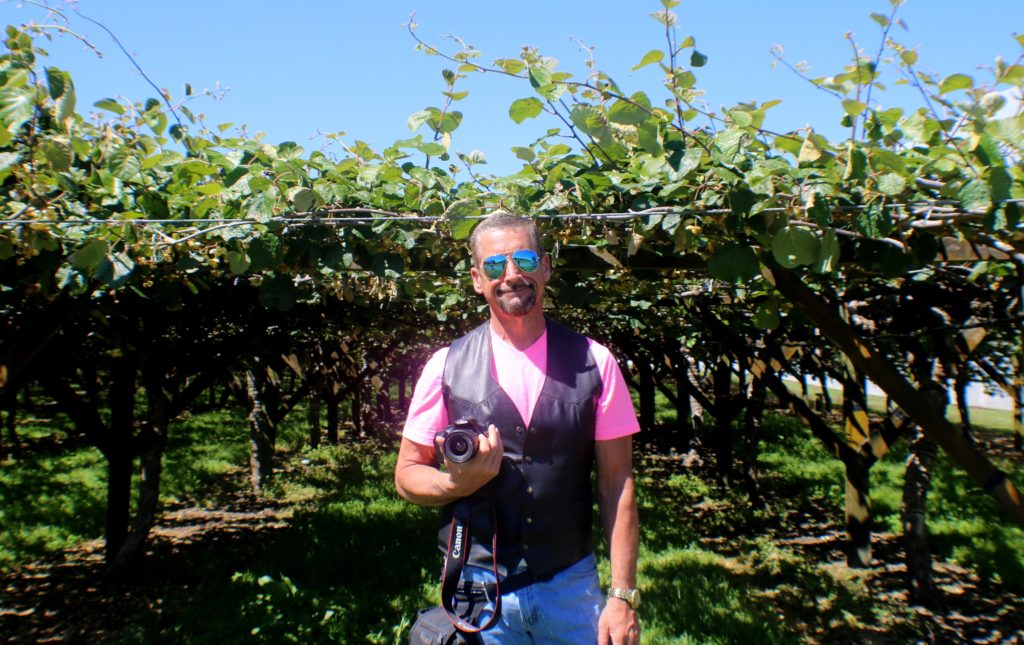
Kiwis were in bloom at that time.
New kiwis are planted in this part of the orchard. Love this live green fences.
Leaving the kiwi orchard to continue our tour.
Next stop was at Okere Falls. we drove through the rolling farmland and pine tree forests then disembarked for a brief stroll to Okere Falls, a small town popular for its waterfalls and lakefront views.
Okere Falls are small, but powerful.
Then, we stopped for lunch at the lakeside café near Lake Rotorua (own expense) before visiting the thermal wonderland of Whakarewarewa in the afternoon.
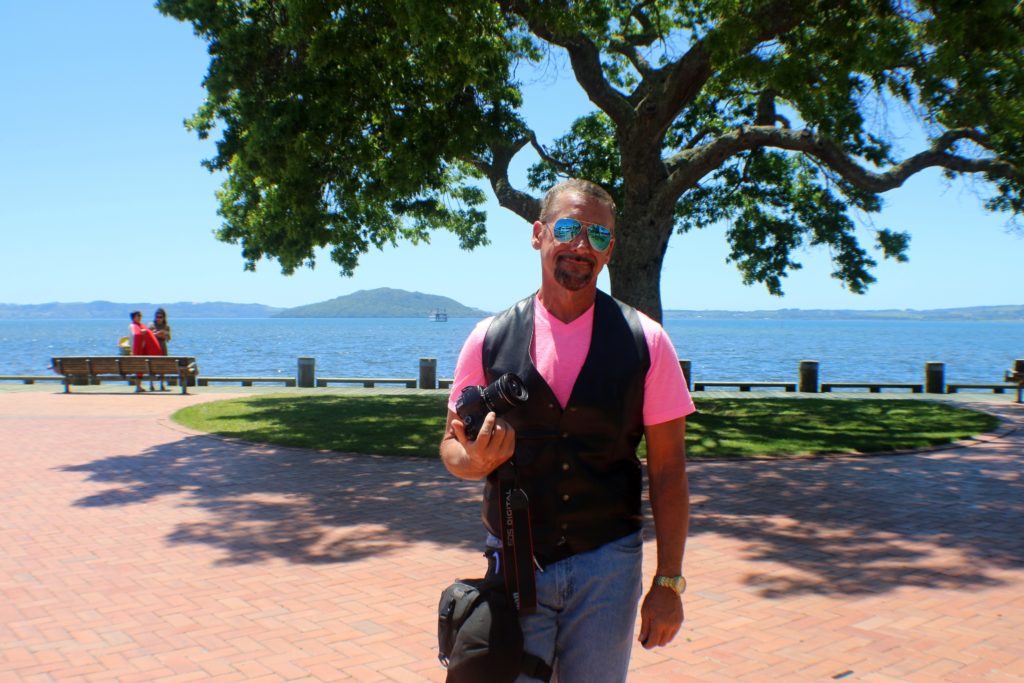
And yes, we enjoyed the great kiwi shake.:)
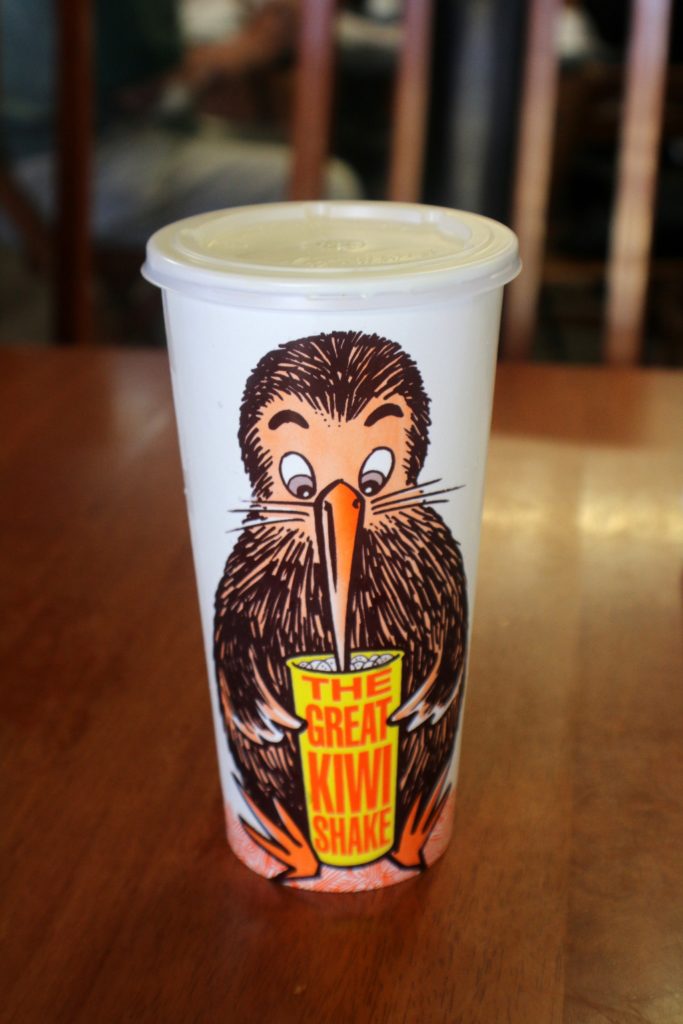
The most of our time we spent at Whakarewareva Geothermal Valley.
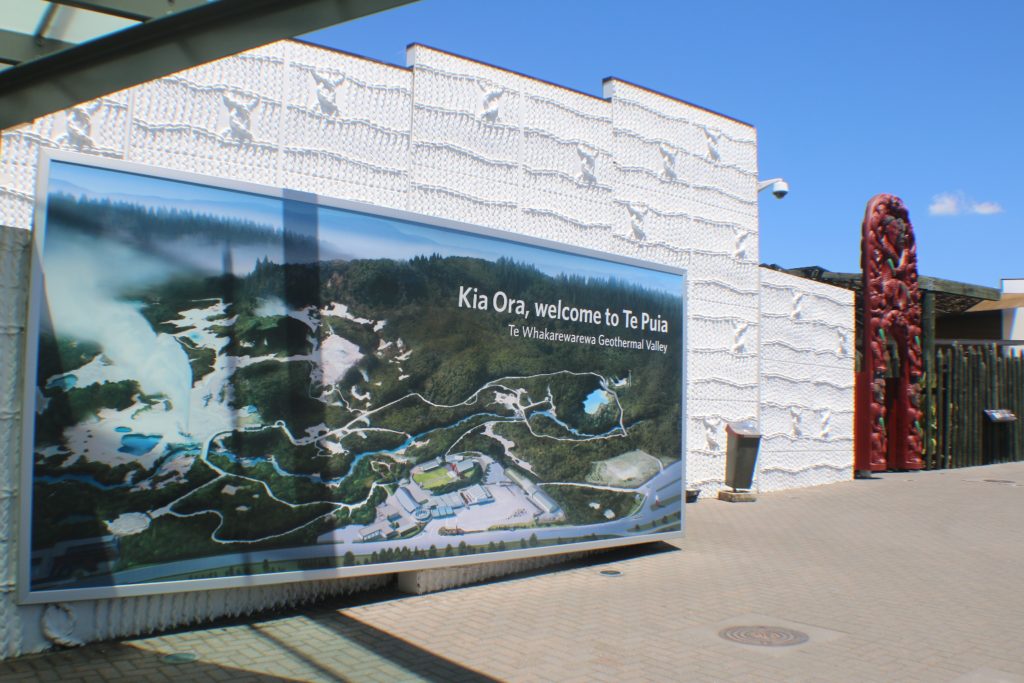
The Geothermal Valley map is right next to the entrance.
Our experience began with the cultural performance from a local Maori group. The 45 minutes concert included a powhiri (welcome) onto the Marae (meeting house), as well as traditional songs and dances. We were able to see the famous Haka (war dance) at an authentic living Maori village. The performance they put on was very entertaining.
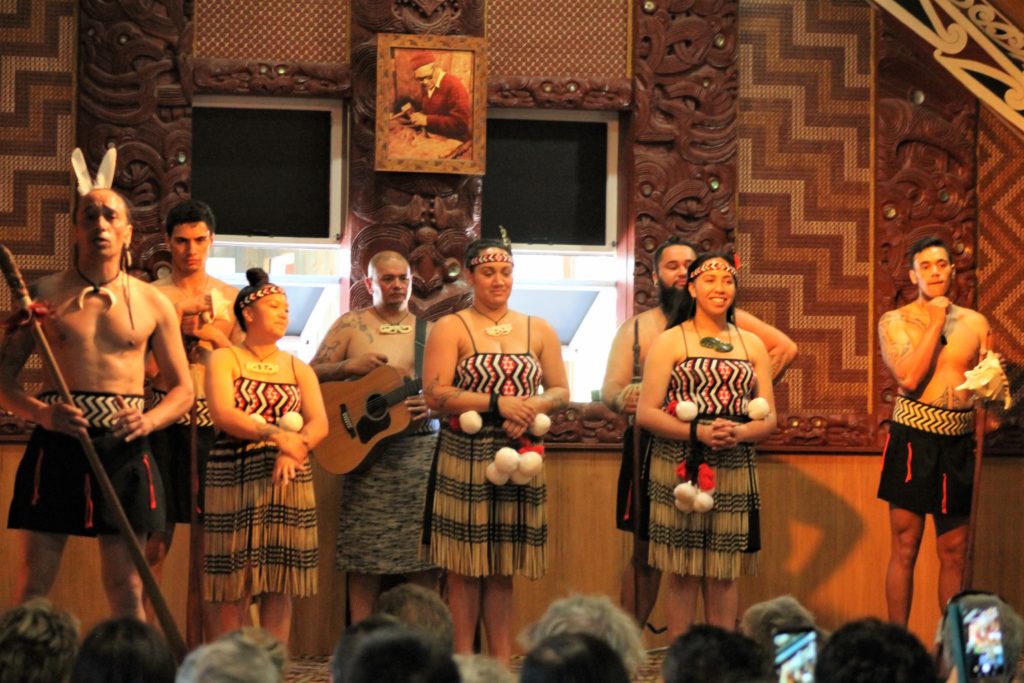
This performer shows some Maori worrier’s moves in front of Marae building.
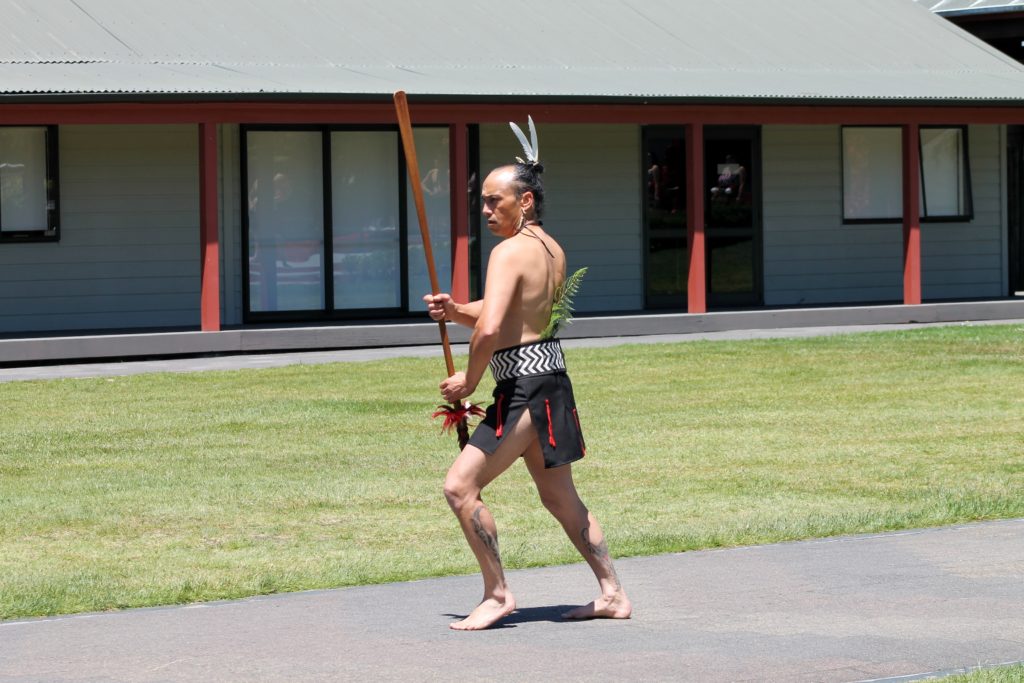
A picture with the Maori performer after the concert.
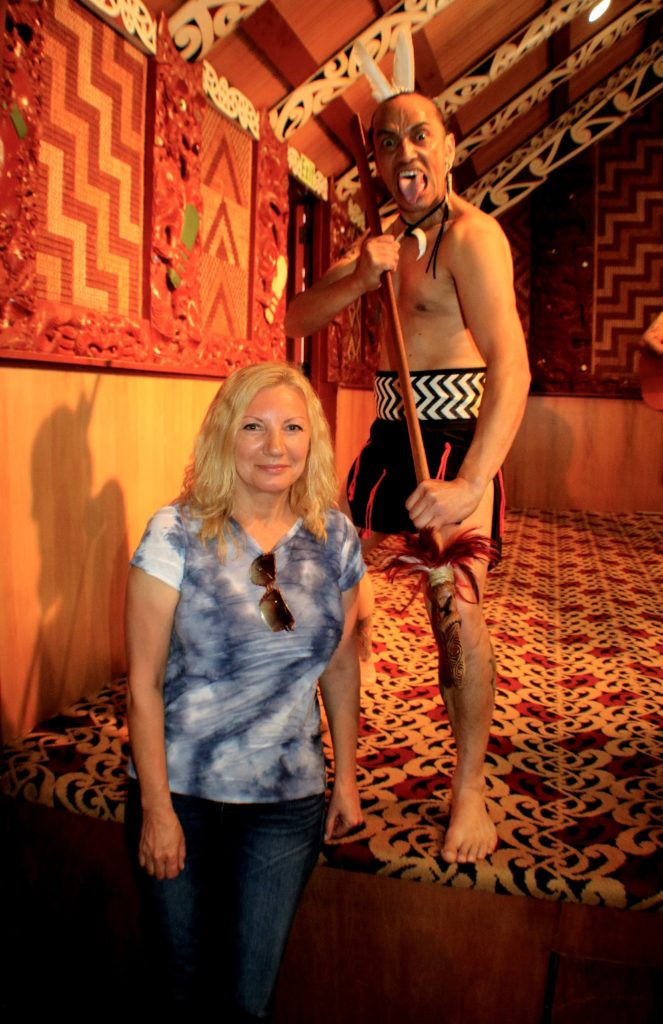
Inspired by performers.
Seeing geysers explode high into the air, viscous mudpools bubbling away and boiling hotpools simmering endlessly was definitely a highlight of Te Puia, where we were up close and personal with many of the geothermal features.
We also had an option to tour the Maori village, watch craftsmen and women learn their trade in the newly refurbished carving and weaving schools. We decided to skip it and spend more time exploring the geysers and mud pools.
The bright colored patches can be spotted very often in the valley.
Pohutu is one of the most active among the six geysers in The Puia and the largest geyser in the southern hemisphere. The Maori appropriately named it Pohutu, which means big splash in their language. This geyser shoots up water up to a height of 100 feet (30 meters).
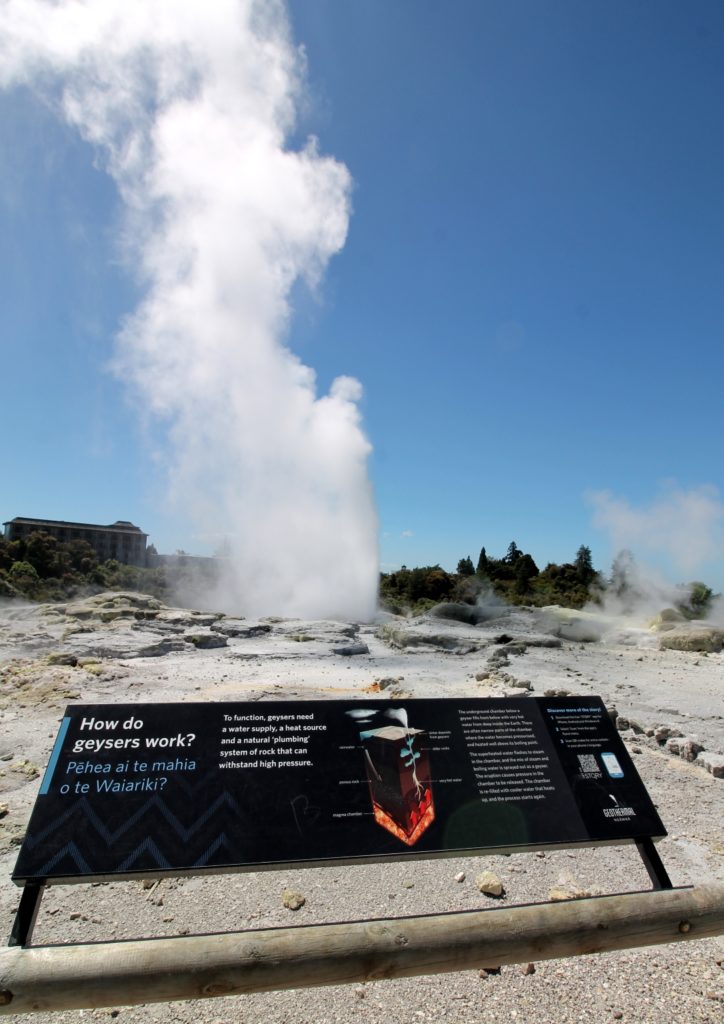
Blue Pool more commonly referred to as bluey because of its blue colors and in former times was used as a bathing pool. This large Pool collects outflows from the geysers and it is very Alkaline.
Park is beautiful and very well equipped. There are many informational board like the one below all over the park.
On our way back from the geothermal valley, we stopped to spot a kiwi in the nocturnal enclosure. These shy birds are New Zealand’s national icon and are now endangered. It is impossible to take a picture of a live kiwi in a such dark place without flash, which is not allowed there. Here is a stuffed kiwi at the entrance of the enclosure.
Finally, we were taken on a tour of Rotorua’s interesting city center, including famous landmarks such as Government Gardens, the Bath House, and natural hot springs at Whangapipiro (Rachel’s Pool). Our guide shared knowledge about not only Rotorua, but the Bay of Plenty region as a whole, which is a popular place to live.
Front view of the timber-framed Rotorua Museum, previously the Bath House, from the Government Gardens. The Government Gardens is a public park, partly laid out as gardens, located beside Lake Rotorua in central Rotorua, Bay of Plenty, North Island, New Zealand. It was built by the government as a tourism attraction, and is still a major tourism destination in New Zealand.
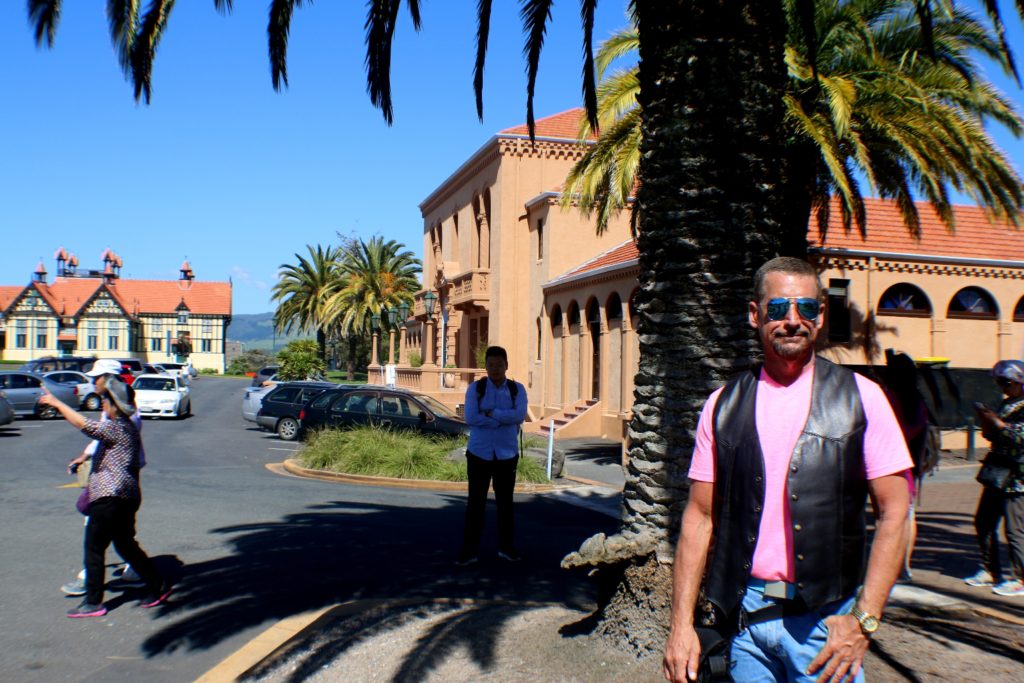
Here is a popular mineral bath in the grounds of the Government Gardens at Rotorua. Also known as Rachel’s Bath or Rachel’s Pool.
Our Rotorua shore excursion was completed with the return to Mt. Maunganui, following a scenic route via the Tauranga city center before crossing the harbor bridge to the port.
Enjoying a beautiful sunset before departing from Tauranga. Bye Mt. Maunganui.
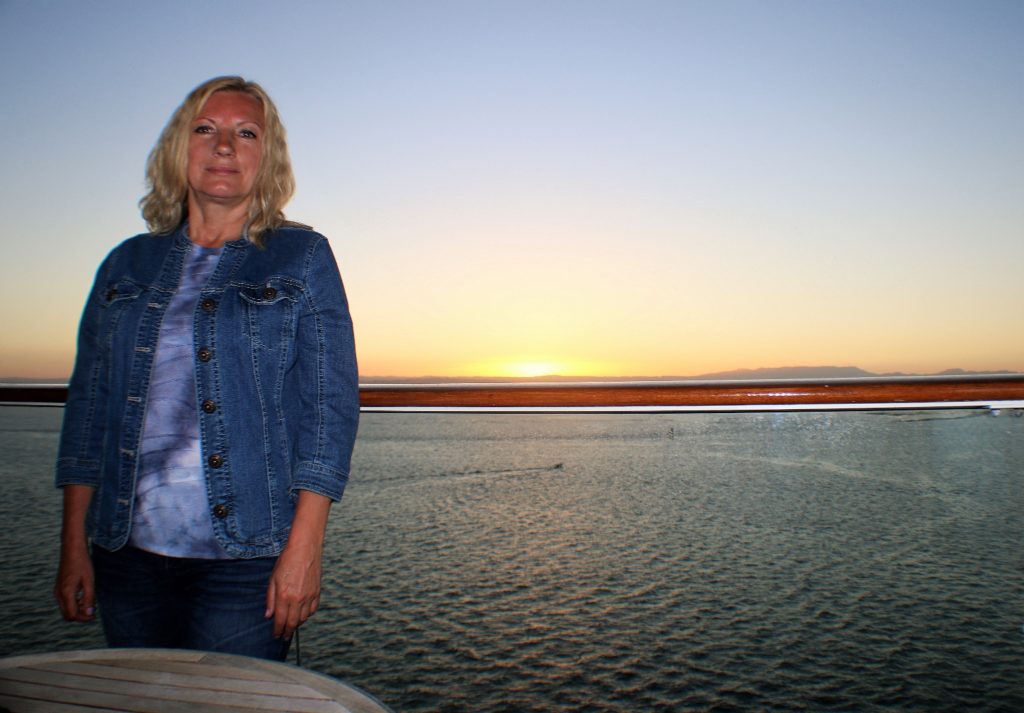
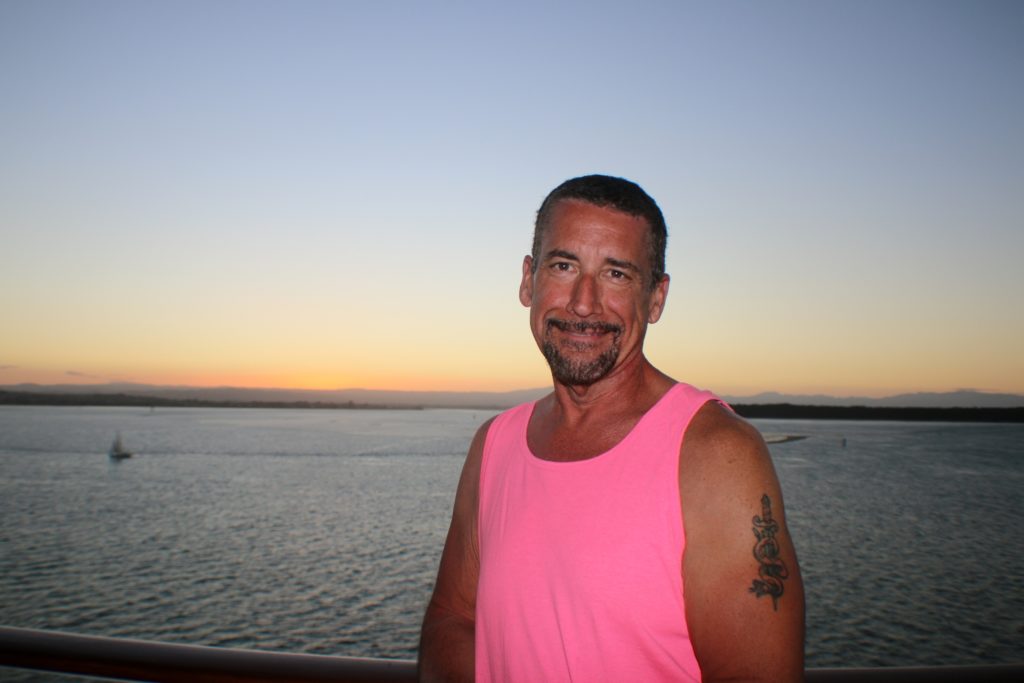
There is a video to depict some moments of our Rotorua tour. New Zealand is spectacular!
